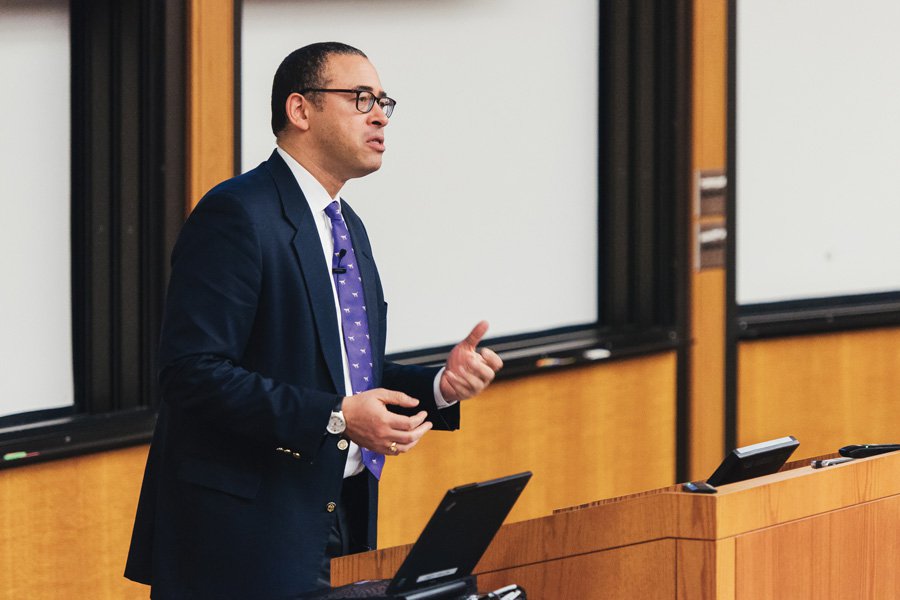University considering calendar changes to Thanksgiving, Spring Breaks
Daily file photo by Noah Frick-Alofs
Provost Jonathan Holloway speaks at Faculty Senate. Holloway said the proposed academic calendar changes may create a “more humane Fall Quarter” and increase the length of spring break.
October 6, 2017
The University is considering changes to the academic calendar that could involve shortening the length of Fall Quarter and increasing the length of Spring Break, Provost Jonathan Holloway said.
Holloway said these changes, including creating a “more humane Fall Quarter,” would have to be “put in place” by Dec. 1 in order for them to take effect during the 2019-20 academic year.
Faculty have discussed possible calendar changes since the 2015 Faculty Task Force on the Undergraduate Academic Experience found that the current academic calendar puts students at risk for mental exhaustion.
“I’m very attuned to the fact that calendar stress is real,” Holloway told The Daily on Thursday. “I fully understand the need to rest — you burn hot for 10 weeks and we’ve got to find a way to recognize the reality of that.”
Faculty Senate president-elect and Philosophy Prof. Baron Reed said “high levels of student stress” are one of the main considerations when evaluating the calendar.
Reed said possible changes to the calendar include canceling classes for the week of Thanksgiving or ending Fall Quarter after the holiday. The changes, he said, could give students a longer break.
The one-week break between Winter and Spring Quarters can be an “intense experience,” Reed said. He added that the break could be extended by ending Winter Quarter finals a day earlier and beginning Spring Quarter one or two days later.
Reed said calendar changes to Spring Quarter should not push back the June end date so as not to impede students’ availability for summer internships, jobs and other programs.
“The quarter system can be exhilarating, but it can also be challenging,” he said. “The pace is very high compared with semester schools, so if there’s a way to make it easier for students … that’s something we would like to do.”
The 2015 faculty task force initially proposed the idea of a “10-5-5-10” system, in which Winter Quarter would be split into two five-week halves. However, Reed said faculty members reached a consensus that it would be difficult to maintain continuity with the proposed schedule.
Maintaining the quarter system with some changes will make it easier for faculty to create courses using “cutting-edge material” and for students to study new, exciting topics, Reed said.
“This is coming out of a long series of conversations that faculty and administration have been having together,” Reed said. “We have been moving fairly deliberately so that it would be an opportunity for everyone on campus to weigh in and have their point of view shared.”
Erica Snow contributed reporting.
Email: allysonmauch2020@u.northwestern.edu
Twitter: @allymauch



